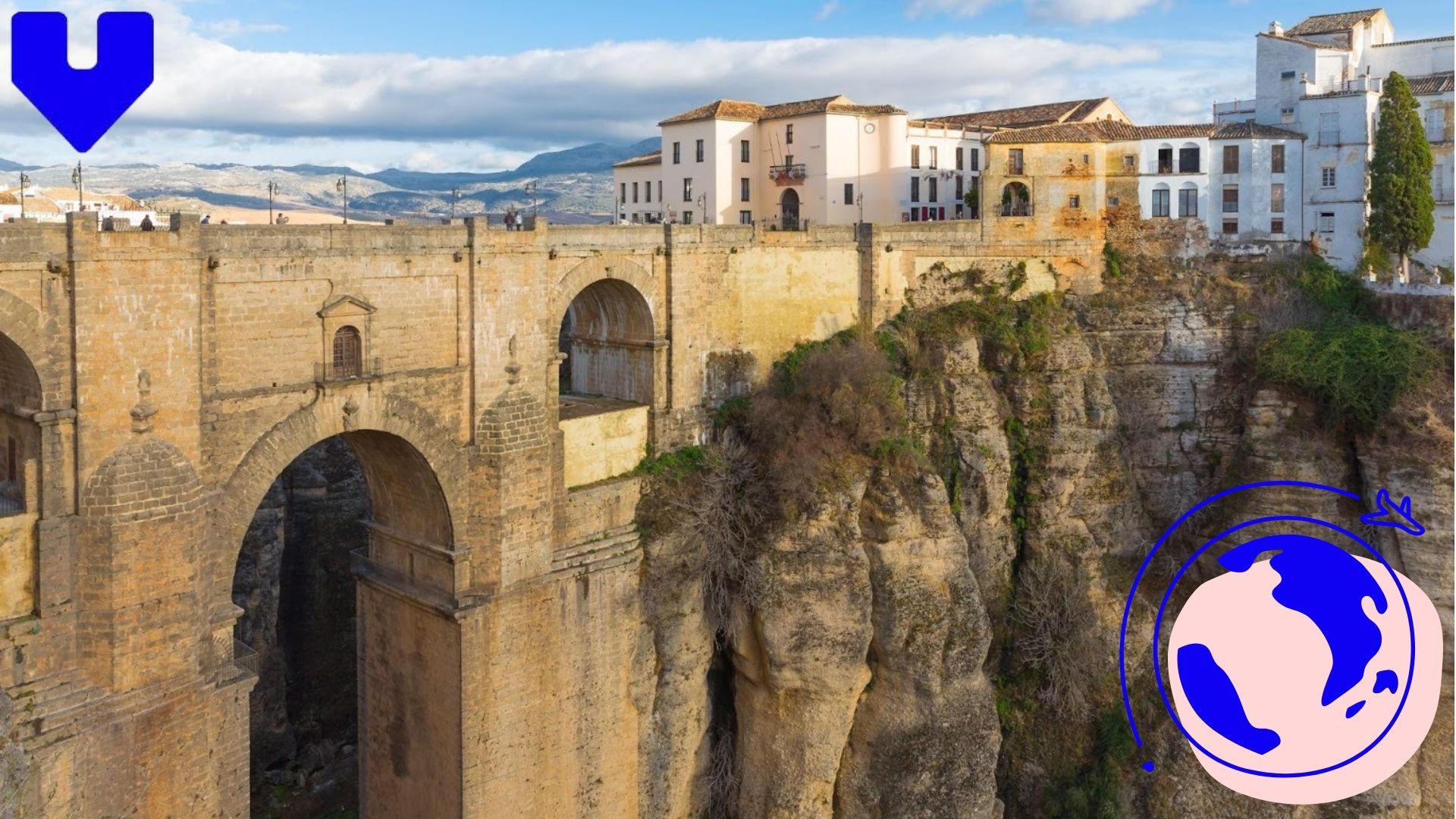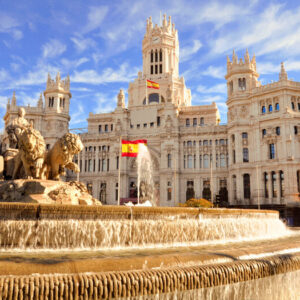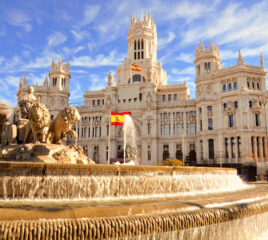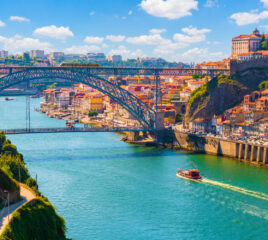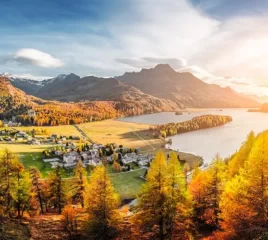Note that iPhone devices from Mainland China aren’t eSIM compatible. Also iPhone devices from Hong Kong and Macao aren’t compatible (except for iPhone 13 Mini, iPhone 12 Mini, iPhone SE 2020 and iPhone XS)
Spain is one of Europe’s most visited destinations, known for the energy of Madrid, the artistry of Barcelona, and the passion of Seville. Yet beyond these iconic cities lies another Spain – quieter, more personal, and steeped in tradition. Here, cliffside villages, medieval walls, and sunlit plazas reveal a way of life where time slows down and authenticity still thrives.
From the mountain ranges of Teruel to the olive groves of Andalusia, these small towns preserve Spain’s layered history and living culture. Each offers its own blend of charm, heritage, and everyday beauty – proving that some of Spain’s greatest stories unfold not in its largest cities, but in places like Ronda, where dramatic landscapes and history meet.
Before you begin your journey, you can also explore the Ultimate Travel Guide to Spain’s Cuisine, Architecture, and Culture to get a deeper insight into what makes the country’s regional traditions and artistry so unique.
Ronda – A Dramatic Town Above the Gorge
Perched high on a plateau in Málaga province, Ronda commands breathtaking views of the surrounding Serranía de Ronda mountains. Divided into two by the sheer El Tajo gorge, the town has a magnetic presence that has inspired writers, poets, and travellers for centuries.
Puente Nuevo – Icon of Ronda
The Puente Nuevo, or “New Bridge,” is Ronda’s most recognisable landmark. Completed in 1793, it soars nearly 100 metres above the Guadalevín River, connecting the Moorish old town with the newer El Mercadillo district. The stone structure, with its three grand arches, blends perfectly with the rugged cliffs. Viewing it from below – accessible by a hiking trail – reveals its sheer scale and the dramatic drop into the gorge.
Moorish Quarter and Arab Baths
Ronda’s La Ciudad, the old Moorish quarter, retains much of its historic charm. Narrow lanes lined with whitewashed houses lead to quiet courtyards shaded by orange trees. The Arab Baths, dating from the 13th century, are among the best preserved in Spain. Their brick arches and intricate water systems reflect the ingenuity of Islamic architecture in Andalusia.
Stay Connected in Spain
Travel smarter with instant eSIM activation for your trip.
Local Wineries and Andalusian Dining
The region around Ronda is a rising star in Spanish winemaking. Small vineyards produce excellent reds and whites, often organic, which can be sampled on tours. In town, the food scene draws heavily on Andalusian traditions – from rabo de toro (oxtail stew) to tapas showcasing seasonal vegetables, cheeses, and Iberian ham. Pair a hearty meal with a glass of local wine, and you’ll quickly understand Ronda’s culinary appeal.
Hiking Trails and Panoramic Vistas
Ronda is not only a cultural treasure but also a gateway to nature. Hiking routes snake through the Serranía de Ronda, offering everything from gentle countryside walks to challenging treks with sweeping views of the town and surrounding valleys. For photographers, sunrise and sunset light up the cliffs in golden tones, making every angle picture-perfect.
Cáceres – Where Time Stands Still
In the western region of Extremadura, far from Spain’s crowded coastal resorts, Cáceres stands as a living museum of history. Its UNESCO-listed Old Town, known as the Ciudad Monumental, feels suspended in another era. Within its thick medieval walls, time seems to flow at a slower pace, making it a place where every stone tells a story.
UNESCO Old Town and Medieval Walls
Cáceres’ Old Town is a stunning blend of Roman, Islamic, Gothic, and Renaissance influences, enclosed by 12th-century walls that once defended the city. Enter through the Arco de la Estrella, and you’ll step into a maze of cobblestone streets lined with towers, churches, and noble homes.
The Torre de Bujaco stands out as a must-see landmark, offering sweeping views over the lively Plaza Mayor, where cafés and terraces capture the rhythm of local life. From here, Cáceres unfolds in winding stone lanes that invite you to slow down and explore.
Renaissance Palaces and Gothic Churches
Cáceres reached its height during Spain’s Age of Discovery, when wealthy families enriched by the Americas returned to build elaborate palaces. The Palacio de los Golfines de Abajo, with its intricate façade, and the Palacio de Carvajal, complete with a lush interior courtyard, are two of the finest examples. Interspersed among them are Gothic churches such as Santa María la Mayor, whose cool interiors and religious artworks offer a welcome pause from the sun.
Hidden Courtyards and Shaded Plazas
Part of Cáceres’ charm lies in the discovery of small details – a flower-filled balcony, a carved coat of arms, or a shaded courtyard where the air is heavy with the scent of jasmine. The Old Town invites slow exploration, rewarding those who take the time to linger in quiet corners away from the main thoroughfares.
Seamless Travel Connection
Experience fast, reliable data anywhere you go in Spain.
Regional Extremaduran Cuisine
Cáceres is a gastronomic destination in its own right. The surrounding countryside is home to dehesa landscapes where Iberian pigs graze freely, producing some of Spain’s finest ham. Specialities like torta del Casar, a creamy sheep’s cheese, and caldereta de cordero (lamb stew) are staples of local menus. Many of the restaurants occupy restored historic buildings, blending rustic charm with fine dining.
Evening Walks and Cultural Events
If the daytime offers architectural beauty, the evenings bring a special magic to Cáceres. As the sun sets, the sandstone walls take on a golden hue, and the quiet streets echo with footsteps rather than traffic. Throughout the year, the town hosts events such as the Cáceres Medieval Festival, when its streets are transformed into a lively re-creation of its historic past, complete with market stalls, music, and performers in period dress.
Cáceres is the kind of place that reshapes your idea of what travel in Spain can be. Its mix of monumental history, intimate streetscapes, and exceptional food makes it every bit as rewarding as the country’s more famous urban centres.
Albarracín – Spain’s Fairytale Hilltop Escape
Hidden in the rugged mountains of Teruel province in Aragón, Albarracín is often hailed as one of the most beautiful towns in Spain. Its setting is nothing short of dramatic – perched on a rocky outcrop above the winding Guadalaviar River, surrounded by the rolling peaks of the Sierra de Albarracín. From the moment you approach, with the town’s fortified walls zigzagging up the hillsides, you’ll understand why it feels like a living piece of history.
Walled Town and Defensive Towers
Albarracín’s medieval walls remain one of its most distinctive features. Climbing steeply along the hills and punctuated by solid watchtowers, they were built to guard against invasion during centuries of political and territorial conflict. The Torre del Andador, positioned at the highest point, is the best spot for panoramic views – here you can see the terracotta rooftops, the tight web of streets below, and the expansive valley stretching beyond. Walking these fortifications is both a history lesson and a photographer’s dream.
Narrow Streets and Pink-Hued Houses
The charm of Albarracín lies in its unique architecture. Houses are built in timber and stone, finished with a pinkish plaster that changes shade with the day’s light. Balconies spill over with flowers in spring and summer, while in winter, the pastel façades contrast beautifully with the frost-tipped surroundings. The streets are narrow and twisting, revealing new surprises at every turn – a hidden archway, a carved wooden doorway, or a small plaza that suddenly opens into a wide view over the river.
Explore Without Roaming Fees
Enjoy unlimited adventures in Spain with affordable eSIM data.
Archaeological Heritage and Prehistoric Rock Art
Albarracín’s history stretches back far beyond the medieval period. Just a short drive away lies the Pinares de Rodeno Natural Park, a protected area of red sandstone cliffs and pine forests. Scattered among its rocky shelters are prehistoric rock paintings, now part of a UNESCO World Heritage listing. Depicting hunting scenes, animals, and abstract shapes, they offer a rare connection to human life in this region thousands of years ago. Visitors can follow marked trails to view several of these sites, making the experience both cultural and scenic.
Seasonal Festivals and Local Traditions
Though small, Albarracín comes alive with color and music during the Fiestas de la Virgen de la Vega each September, when locals gather for parades, dancing, and shared meals in the town’s plazas.
Its cuisine mirrors its mountain setting – hearty and full of flavor. Favorites include cordero asado (roast lamb), migas with chorizo, and rich game stews. In winter, the scent of wood smoke drifts through the streets, wrapping Albarracín in a warm, storybook charm.
Slower Pace, Richer Rewards
Albarracín isn’t a place to rush. Its charm lies in slow moments – walking the ancient walls, sipping coffee in the main square, or watching dusk settle over the mountains. With its fortified skyline, winding streets, and deep historical roots, Albarracín offers a glimpse of Spain untouched by modern bustle – a living link to the country’s past and one of its most authentic treasures. Stay connected as you explore Albarracín with Voye Global’s eSIM for Spain, offering seamless coverage even in the country’s most remote and tranquil towns.
Besalú – Medieval Charm in the Heart of Catalonia
Tucked into the scenic province of Girona, Besalú is a town that seems purpose-built for those who love history wrapped in an intimate, walkable setting. Its cobbled streets, centuries-old architecture, and stunning stone bridge give it the appearance of a perfectly preserved open-air museum. At the same time, its location at the edge of the Garrotxa Volcanic Zone means natural beauty is never far away.
The 12th-Century Romanesque Bridge
No image of Besalú is more iconic than its Romanesque bridge, built in the 12th century to span the Fluvià River. Its distinctive angled design, fortified gateway, and seven graceful arches make it one of Spain’s most photogenic medieval structures. The bridge was once the town’s main point of defence and commerce, funnelling travellers and traders into the bustling market town within the walls. Crossing it today is an atmospheric experience – especially early in the morning, when mist hangs over the river, and the stonework glows in soft light.
Jewish Quarter and the Mikveh
Besalú’s Jewish Quarter offers a fascinating glimpse into a chapter of Spanish history that is often overlooked. At its heart is a 12th-century mikveh – a ritual Jewish bath carved directly into the rock and one of the best-preserved examples in Europe. Visiting with a guide allows you to understand its historical and cultural significance, as well as the way this community shaped Besalú’s economic and social life in the Middle Ages.
Artisan Shops and Local Flavours
One of the pleasures of visiting Besalú is browsing its small artisan shops. Local crafts include hand-painted ceramics, woven baskets, and artisanal cheeses. Food is central to the town’s identity, with bakeries offering xuixos – sugar-dusted pastries filled with sweet cream – and delicatessens selling cured meats and honey from nearby farms. Weekend markets fill the central square with stalls selling seasonal produce, adding a lively energy to the otherwise tranquil atmosphere.
Exploring the Garrotxa Volcanic Landscape
Just beyond Besalú lies the Garrotxa Volcanic Zone Natural Park, a landscape of extinct cones, beech forests, and tranquil villages. Scenic trails and cycling routes make it perfect for balancing culture with nature.
With its medieval bridge, historic lanes, and artisan spirit, Besalú offers the depth and beauty of a major city in a more peaceful setting. Whether crossing the bridge at sunset or relaxing in a quiet café, this timeless town feels like stepping into another era.
Reliable Travel Connectivity
Stay online across Spain with secure, uninterrupted coverage.
Úbeda – The Renaissance Jewel of Andalusia
In the olive-rich province of Jaén, Úbeda stands as one of Spain’s most elegant and historically significant small towns. Together with neighbouring Baeza, it forms a UNESCO World Heritage Site renowned for its Renaissance architecture, cultural heritage, and culinary traditions. Wandering its streets is like walking through a perfectly preserved chapter of Spain’s Golden Age.
Vázquez de Molina Square – Architectural Masterpiece
At the heart of Úbeda lies Plaza Vázquez de Molina, one of the most beautiful squares in Andalusia. This open space is framed by some of the town’s most remarkable buildings, including the Sacra Capilla del Salvador, whose richly decorated façade and intricate interior reflect Renaissance grandeur at its peak. Nearby stands the Palacio de las Cadenas, now home to the Town Hall, with its stately arcades and symmetrical design.
Palaces, Churches, and Cultural Sites
Beyond the main square, Úbeda is dotted with Renaissance palaces, Gothic churches, and lively plazas. The Hospital de Santiago is particularly striking, combining Gothic, Renaissance, and Baroque elements under a grand roofline. For an insight into local craftsmanship, the Pottery Museum Paco Tito showcases traditional ceramics, with workshops still producing pieces using centuries-old techniques.
Olive Oil Heritage and Gastronomy
Surrounded by endless olive groves, Úbeda is at the heart of Spain’s olive oil production. Many local estates offer guided tours of their mills, where visitors can learn about harvesting, pressing, and tasting extra virgin olive oil. The town’s restaurants make excellent use of this liquid gold, pairing it with regional specialities such as pipirrana (a fresh tomato and pepper salad), slow-cooked lamb, and seasonal game dishes.
Linking with Baeza
Just a short drive away, Baeza offers a complementary experience, with its collection of Renaissance buildings, a quieter atmosphere, and equally strong gastronomic traditions. Visiting both towns together provides a fuller picture of the region’s history and artistry.
Conclusion
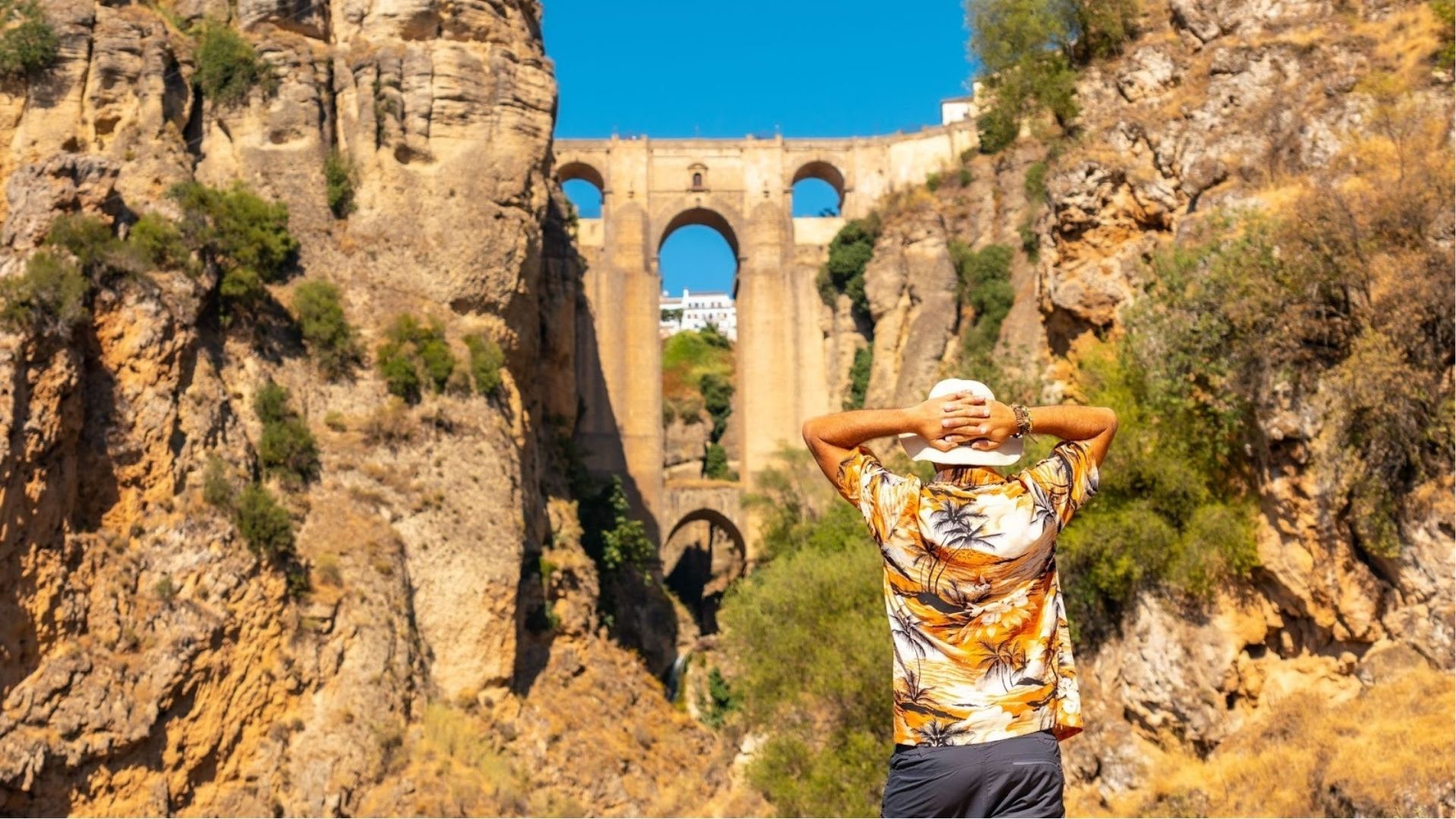
Spain’s beauty extends far beyond its famous cities. In Ronda, Cáceres, Albarracín, Besalú, and Úbeda, travelers discover a more authentic side of the country – one defined by timeless streets, local warmth, and living history. These towns offer culture and charm equal to any metropolis, but with a slower pace and a deeper sense of connection.
If you’re also planning to explore Spain’s vibrant urban side, don’t miss our guide to the Best City Breaks in Spain – a perfect complement to these quieter, culture-rich escapes.
Wherever your journey leads – from Andalusia’s olive hills to Catalonia’s medieval bridges – Voye Global eSIM for Spain keeps you connected with reliable data across Spain. Explore freely, navigate easily, and share every story from even the quietest corners of your Spanish adventure.
FAQs
1. Can I use one eSIM across all Spanish regions?
Yes. One Voye Global eSIM covers all of Spain – from Catalonia to Andalusia.
2. Which town is best for medieval history?
Cáceres impresses with its UNESCO-listed Old Town, while Besalú charms with its bridge and Jewish Quarter.
3. Does Voye Global work in rural or mountain areas?
Yes. It connects through top Spanish networks for reliable service even in remote zones.
4. Which town combines culture and nature best?
Besalú offers heritage near the Garrotxa Volcanic Zone; Ronda blends trails with history.
5. Can I activate my eSIM before arriving in Spain?
Absolutely. Set it up before your trip and go online instantly on arrival.
6. Where can I try authentic regional food?
Úbeda is famous for olive oil dishes, while Cáceres offers Extremaduran specialties.
7. Are short-term eSIM plans available?
Yes. Choose flexible data packages perfect for week-long or short trips.
8. Which town is quiet and crowd-free?
Albarracín is ideal for peaceful, authentic travel away from major tourist crowds.

Seamless Mobile Data Everywhere







